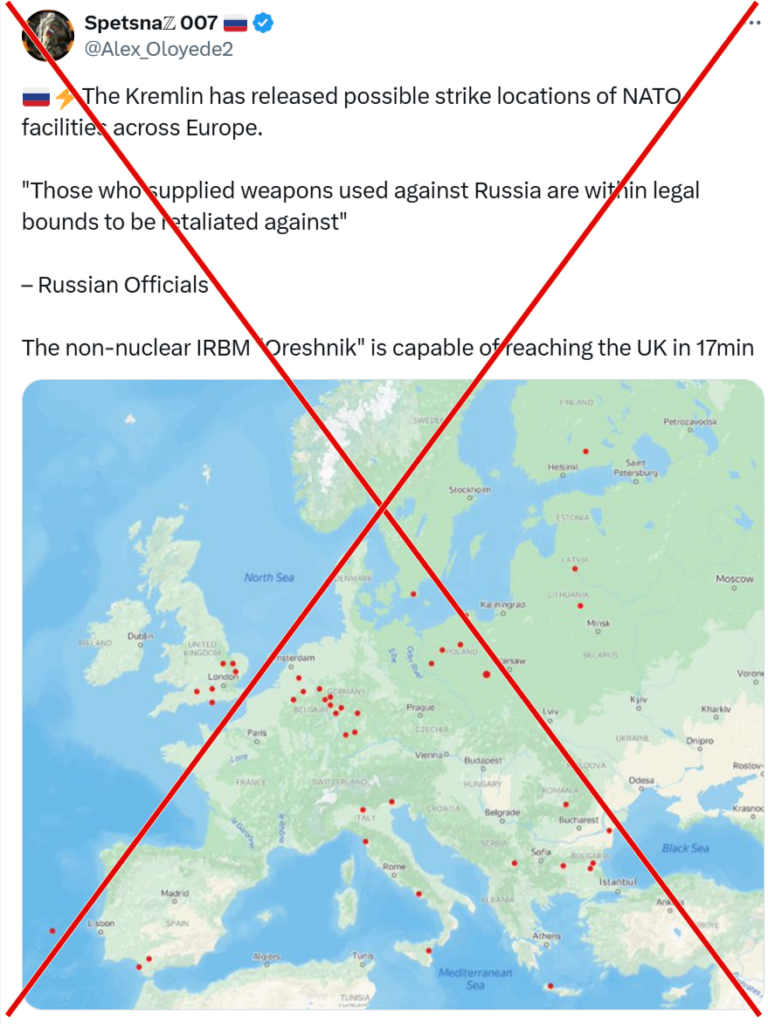CLAIM: The Kremlin released a map showing potential NATO facility strike locations in Europe.
VERDICT: The map in question is not an official release from the Kremlin. It originated from pro-Russian propaganda websites and was later widely circulated on social media. No credible media outlet or official Kremlin source has confirmed its authenticity or association with the Russian government.
Example of social media post:

On November 21, 2024, it was reported that Russia launched an intercontinental ballistic missile (ICBM), identified by Ukrainian officials as the RS-26 Rubezh, targeting infrastructure in the city of Dnipro, Ukraine. According to statements from a Pentagon spokesperson, the missile that struck the industrial complex in Dnipro was a version of the medium-range ballistic missile (IRBM) RS-26 (РС-26 Рубеж), known to NATO as SS-X-31. Vladimir Putin stated that the strike was not carried out with an intercontinental ballistic missile (ICBM) but with a new model of a hypersonic intermediate-range ballistic missile (IRBM) called “Oreshnik“. The missile was reportedly launched from the Kapustin Yar testing range, about 100 kilometers east of Volgograd in the Astrakhan region.
We conducted a reverse image search using Google Lens. The image was found circulating on platforms such as sputnikglobe.com and the “Pravda” network, at least since November 22, 2024. Both are websites known for disseminating pro-Russian propaganda (here and here). The specific publication refers to theoretical targets that Russia could strike in a potential war with NATO, using the Oreshnik missile, which was deployed against Ukraine. However, in the Sputnik Globe article, the image is not presented as originating from the Kremlin or any other official Russian source.

Subsequently, it spread to social media accounts, particularly on X, gaining millions of views (example here). This “news” and the accompanying map have not appeared in any credible media outlet or in any announcement on the Kremlin’s official website in Russian or English.
Finally, the claim has also been debunked by the Italian fact-checking organization “Facta.”
Conclusion:
The map in question is not an official release from the Kremlin. It originated from pro-Russian propaganda websites and was later widely circulated on social media. No credible media outlet or official Kremlin source has confirmed its authenticity or association with the Russian government.

